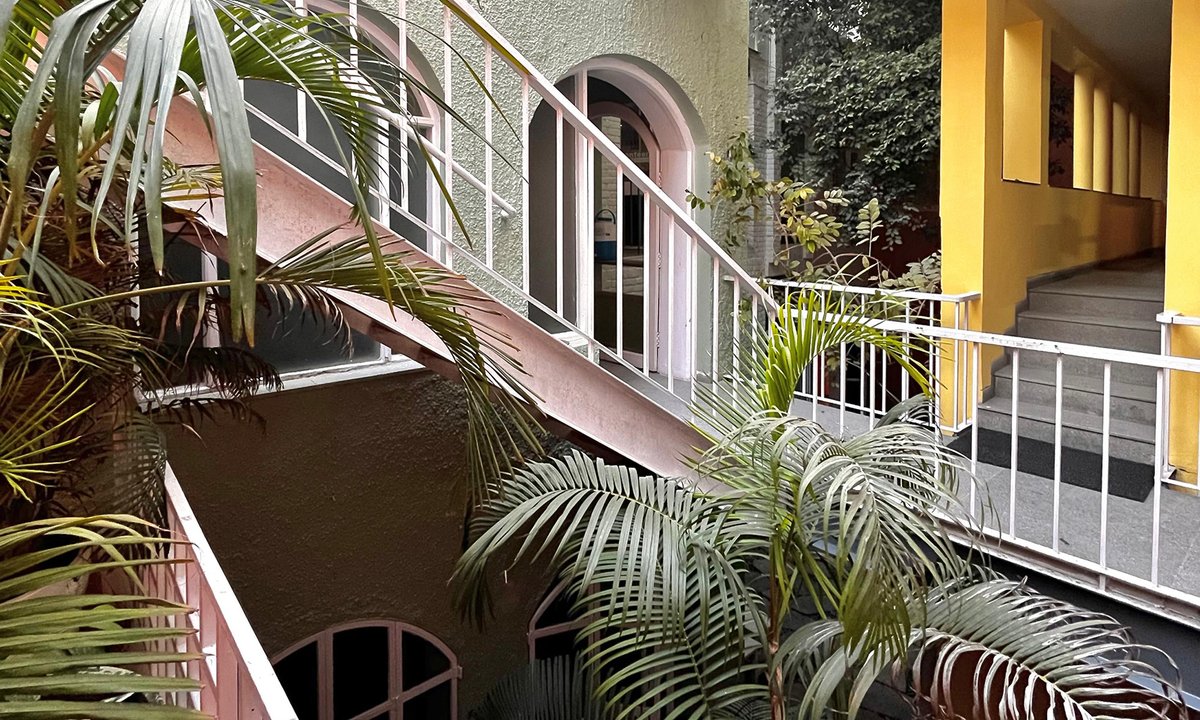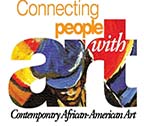Founded in 1997, Khoj moved to its permanent space in south Delhi’s Khirki Village in 2002, from where it runs the Peers programme Courtesy of Khoj International Artists Association
Khoj International Artists’ Association is a singular institution in India today. Since its germination in 1997, when India was liberalising its economy, the New Delhi-based non-profit has welcomed artists from around the world to experiment, fail, flounder and form connections in the process. Now heading into its 28th year, the organisation has, through a combination of residency and exhibition programmes, nurtured India’s art luminaries.
“India was a very different place then [in 1997],” says Pooja Sood, Khoj’s founding member and director. “Let’s be very honest about it, we felt our third-world status.” Artists were constrained, travel opportunities were few and far between, and while there was a domestic art market, collectors typically sought paintings and sculptures of a conservative strain. There was a creative void brewing. Artists emerging from university programmes, yet to be picked up by commercial galleries or find patrons, had few prospects. Robert Loder, a globetrotting British businessman and founder of Triangle Arts Trust, recognised this lacuna. In 1997, in a disused colonial-style bungalow with a sprawling garden, borrowed from an industrialist in Modinagar, he inaugurated his first artists’ workshop in Asia. From India and across the globe, 22 artists including Subodh Gupta and David Koloane came together for two weeks to make art, cook, converse and, in some cases, fall in love.
The enterprise was informal and earnest. Artists who comprised the initial small working group used the office where Sood maintained her day job as a gathering spot to send faxes, write and print letters. “There was hardly any space—we would be sitting on the floor and carry all the office materials in our bags,” recalls Manisha Parekh, an artist in that first group who is now one of Khoj’s eight board members. The enthusiasm lent to these administrative tasks secured the support for early programming from an impressive array of individuals, foundations, embassies, galleries and businesses.
Pooja Sood Khoj Courtesy of Khoj International Artists Association
“These years really set the stage for what Khoj does best, which is peer-to-peer learning, providing a space for experimentation and where artists can be free to fail and fail safe,” Sood says. This model became an export for the team in New Delhi. After five years in India’s capital, Khoj went on the road taking its expertise not only to places within India, including Mysore and Dharamshala, but also to wider South Asia. With funding from Hivos and the Ford Foundation, Sood helped establish Britto Arts Trust in Bangladesh, Vasl Artists’ Association in Pakistan and Theertha International Artists’ Collective in Sri Lanka, together known as the South Asian Network for the Arts.
Khoj finally came to be tethered to south Delhi’s Khirki Village in 2002. Among the labyrinthine tangle of streets heaving with small businesses, the organisation acquired a permanent building. The comings and goings of artists who initially helped run the two-storey space must have made it quite the anomaly. “It was cool,” Sood laughs, “but it was also terrible—we didn’t know how to run it.” Surviving these teething problems, Khoj began what is now its flagship residency programme, Peers. Aimed at graduates from India’s art schools, the programme, which celebrates its 20th iteration this year, offers an intensive studio residency with mentorship, critical review, and studio visits culminating in open studios.
Peers has been the linchpin of the careers of numerous fledgling artists. Om Soorya, a painter in the inaugural 2003 cohort, explains: “Peers allowed me to work with different mediums and gave me clarity on what I should pursue.” The experience for him, as with others, catalysed many opportunities; Soorya was one of the first winners of India’s prestigious Fica (the Foundation for Indian Contemporary Art) Emerging Artist Award, along with fellow Khoj 2003 participant, Rakhi Peswani. For others, the open studios—a magnet for dealers—and Khoj’s ability to make meaningful introductions have been fruitful. “It has always been a place where people congregate. People would just come in,” says Rohini Devasher, one of India’s rising stars and a former Peers artist, who was offered representation by leading Mumbai gallery Project 88 after a chance meeting at the space. “For me, it’s like a home.”
Khoj has long relied on its diverse artist alumni to occasionally donate works for fundraisers, past proceeds of which have enabled the organisation to enlarge and renovate its building. During India Art Fair, Khoj opens its latest exhibition-fundraiser, Peers Continuum: A Relay of Reciprocity (until 28 February), comprising more than 70 works from past Peers residents, including highly regarded artists Manjot Kaur and Sahil Naik.
Artists were invited to donate or create work “to speculate on the future of our lived environment”. Many of the works in the show dwell on concepts such as non-human life forms, dystopias and alternative realities. Gopa Roy’s straw and paper-pulp pages, fastened together with hinges to form a star -shaped constellation, show scenes of environmental destruction. Ragini Bhow offers a way out with a painted lithograph depicting a shell-shaped portal in a style faintly reminiscent of Warli tribal art. Shailesh BR even gives a preview of what this future may feel like with his motion-sensitive, vibrating kinetic sculpture, The First Earthquake (2024).
The future of India’s art ecosystem is probed too via this show, staged to help secure the programme’s next years. Funding for the arts in India is, suggests Sood, at its most perilous. Non-profits are having to contend with the consequences of private foundations and corporations that once backed them diverting their resources into their own new spaces. This is exacerbated by a general reduction in international funding.
It is a confounding time. While outwardly India’s art ecosystem appears to be strengthening and the market purportedly booming, Khoj is feeling ever more fragile. Its security in the past has depended on its openness to adapting. Khoj has, as Parekh says, “gone through various avatars”. As it opens its doors for the fundraiser, the pioneering organisation is hopeful that artists will get to experience its next incarnation.
• Peers Continuum: A Relay of Reciprocity, Khoj International Artists’ Association, S-17, Khirkee Extension, New Delhi, until 28 February
From smuggled paintings to cancelled visas, the heads of the subcontinent's fairs, biennials and galleries weigh in on the ramifications of the contested border
The monographic show spans a 60-year career, from his beginnings in Bombay to later life in France
Multi-disciplinary practitioner was inspired by the 1968 Paris demonstrations to organise artist and student group protests during Indira Gandhi's Emergency rule of 1975-77
Contemporary re-assessments of the independence leader's legacy are unlikely to be addressed by participating artists

